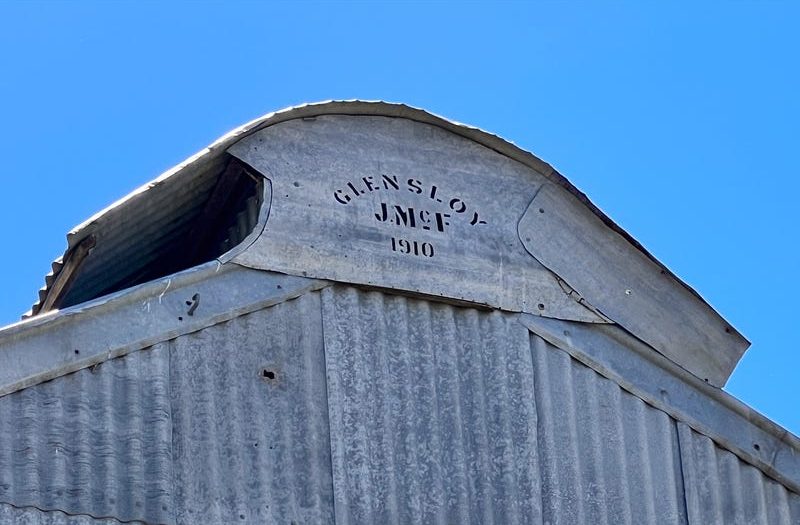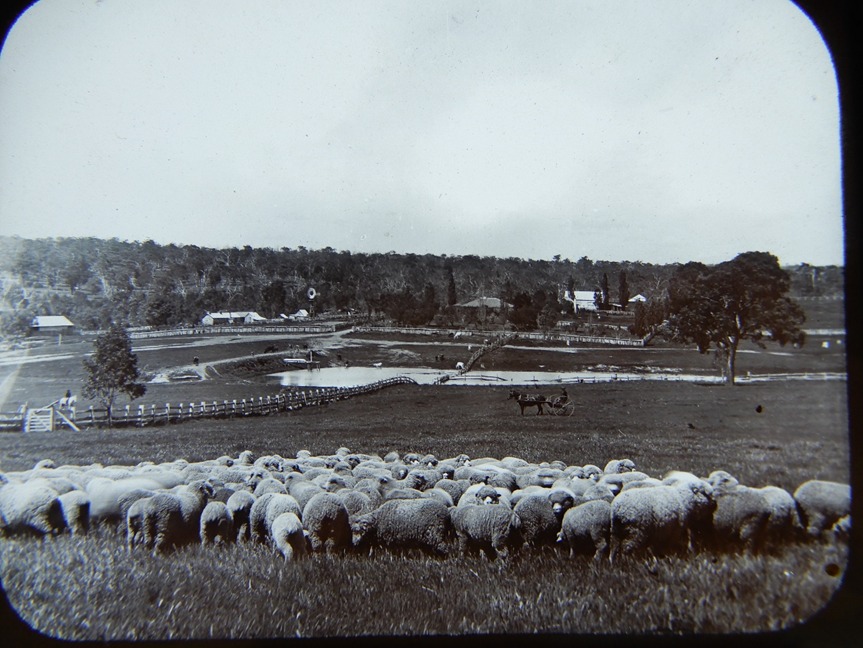
Remnants of history are still evident on “Glensloy” which has been in the Gordon family for three generations, but actually four given the McFarlane connection. Photo: Rachelle Barnett.
A farming property west of Young inextricably bound to the well-storied vast pastoral origins of settlement three decades before the town’s 1860s gold rush, is to go under the hammer next week.
“Glensloy” on the Temora Road, west of Young, stands as an exemplar to the trailblazing days of white claims to the district, which had its genesis in the 100 square mile “Burrangong Station” established in 1826 by British convict James White.
Prominent NSW commercial wool grower Jimmy Gordon says it was likely a search for water that led White further west of his homestead, to a spot called Stoney Creek where a family by the name of Searly would take up the allotment as share farmers.
Today the paddocks on Glensloy still bear the Searly name and, their home, a small stone shingle-roofed cottage built in the 1840s having survived the great perils of the land in fire, drought, famine and progress – still stands strong.
In 1988 the cottage was offered to the ACT Government as a bicentenary gift by Jimmy’s father – Allan Gordon – for placement beside Lake Burley Griffin but the plan was scrapped due to cost.
Location and position has always distinguished this sheltered tract of fertile undulating land and flats along Stoney Creek, and by 1869, 15,000 acres of it had been selected by Englishman John Allen – a Lambing Flat storekeeper and hotelier – for sheep breeding.
On “Stoney Creek Station”, Allen garnered widespread acclaim for his “sound judgement in procuring and utilising good blood for the improvement of his flocks”, the sheep and wool earning many accolades.
Following John’s death in 1878, eldest son Edmund continued to run the property, selling sheep and wool both locally and internationally. Notably, in 1893, he was awarded for a sample of his Merino wool displayed at the World’s Columbian Exposition in Chicago, USA.
Several glass lantern slides of Stoney Creek Station dating back to the 1890s are held at Sydney’s Powerhouse Museum alongside examples of Merino wool, speaking to the importance of the property to the NSW pastoral industry at that time.
Conspicuous in those slides – aside from the beautifully plain-bodied mob of Merinos and languid lounging people – is a large dam, built using Tumbling Tommys and a tank plough at the front of Stoney Creek Station’s timber homestead.

The huge dam in this photo of “Stoney Creek Station” saved the lives of the Allen family when fire swept through the property. The dam is still a prominent feature on “Glensloy”. Photo: Young Historical Society.
Fire would eventually rip through the property, taking out the homestead also forcing the Allens to hurtle into the dam to save themselves.
When Edmund sold Stoney Creek Station in 1902, a homestead block of 5000 acres was bought by Alan John (AJ) McFarlane, of Wellington Lodge in South Australia.
Drawing on the landmark Loch Sloy in Scotland, the new property was named Glensloy and, thanks to the extraordinary engineering prowess of the McFarlanes, it would, from the rubble of fire, rabbit plague and drought, become a thoroughly modern showpiece.
AJ’s stencilled initials still adorn the woolshed roof.
Glensloy has been the province of the Gordon family since the McFarlanes, for it was AJ’s sister Lucy Gordon and her husband Edward William Leslie Gordon, the son of prominent local solicitor, who would buy the property in January 1924.
In 1933 the Farmer and Settler carried an article on Glensloy – at that time hailed as one of the best improved properties in the district – operated by Lucy’s two sons Allan and Dick Gordon.
Wheat, sheep, dairying, pasture improvement and a tremendous wire netted orchard had weathered war, depression, drought and, it was noted, buildings 80-90 years of age were still in use.
As another 90 years passed, these vestiges of the past have been keenly preserved by the Gordons; testament to hardscrabble of early pioneers and the gramercy of the generations that followed.
The countless examples include a brick-lined saw pit used to hew planks from logs used for buildings; an extravagant corrugated iron gas plant for lighting the new homestead constructed in 1906 using bricks moulded from the earth below; a blacksmith’s cottage with tools intact.
A bullock yoke hangs in the hallway of the house with a cedar sideboard custom made for Admiralty House at its heart – the first phone and rain records dating back to 1887, all of this a rich narrative of nearly 200 years of farming.
“Nothing’s ever been sold – that’s pretty unique – they had a clearing sale in 1901 and nothing’s ever been shifted,” Jimmy said, “so there’s a full farming plant down in the bottom shed of all the stuff of that era untouched.”
What also remained relatively untouched are the trees, amid tall striking red gums are a large representation of Kurrajongs, thanks to Jimmy’s grandfather who would toss seeds into clusters of rocks as he rode through the countryside.
Pastorally speaking, it’s a farm built on conservative, regenerative ideals where restraint, rather than abuse of land, led practices.
“Dad always said to me, ‘You’ve got to let a bit blow away,’” Jimmy said. “You can’t get it all, whereas you get some blokes with their foot on the last sheep trying to push them into a bare paddock.
“It’s hard because we probably don’t make as much money,” he said, “but it’s a stewardship as much as it is a business; this land only has so much give and abusing it isn’t going to get you anywhere.”
Conservative management means the historic property – believed to be one of the first to use super to improve pasture – is well known locally for its high production.
Zero chemical has been used on the property in 20 years and recent soil tests are quite impressive, with an average pH of 5.4 and excellent organic carbon levels.
The sale next week marks the first time the 2624-acre lamb, wool and beef production powerhouse has been offered to market since 1901 and its location in the tightly held blue ribbon Hilltops district means interest – according to Rachelle Barnett of Elders, Young – has been robust.
For further details, visit head to the Elders Real Estate website.







